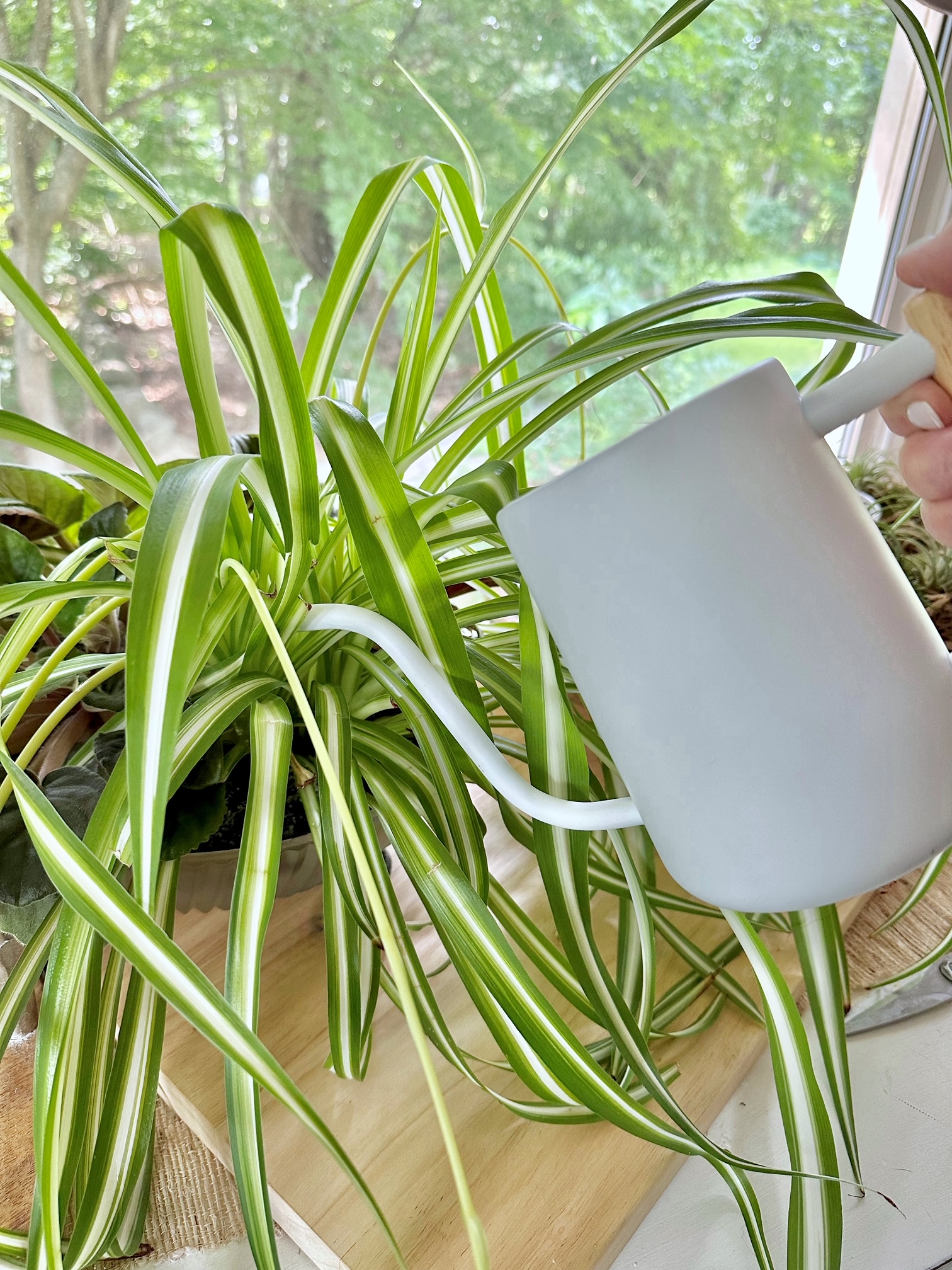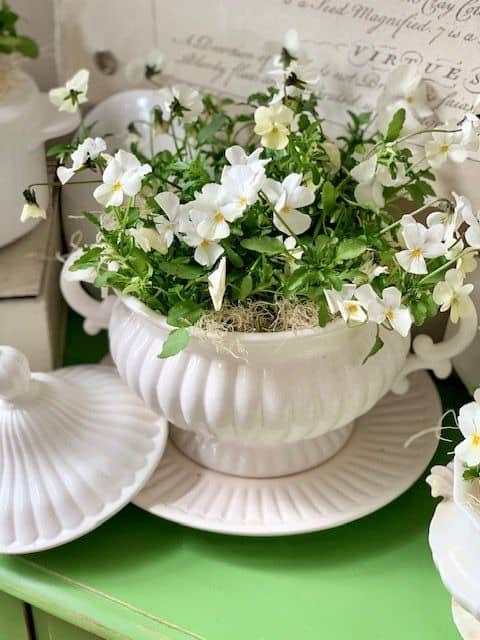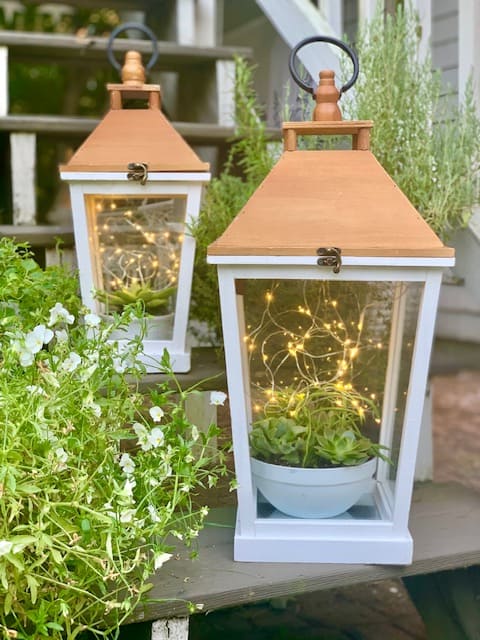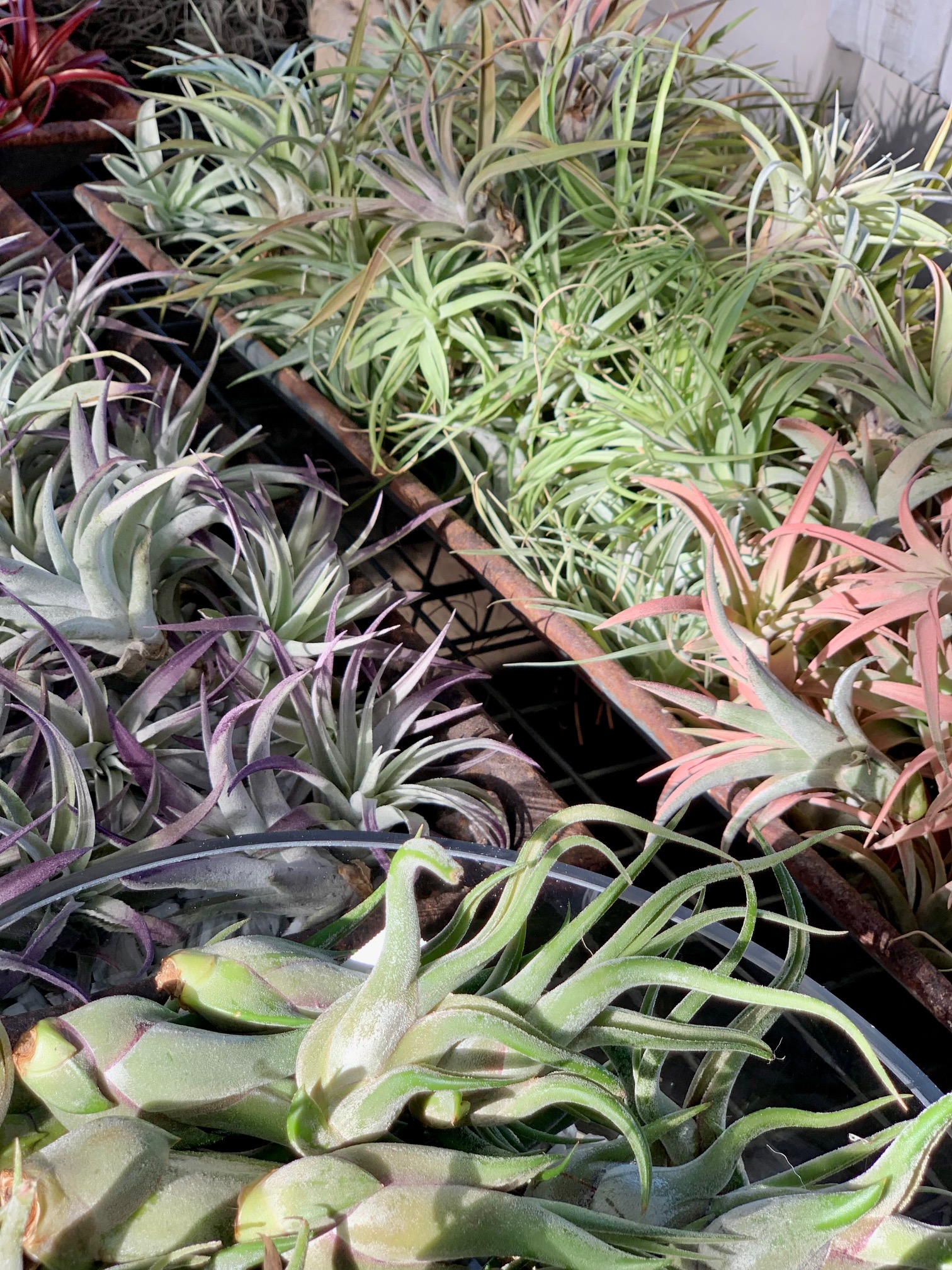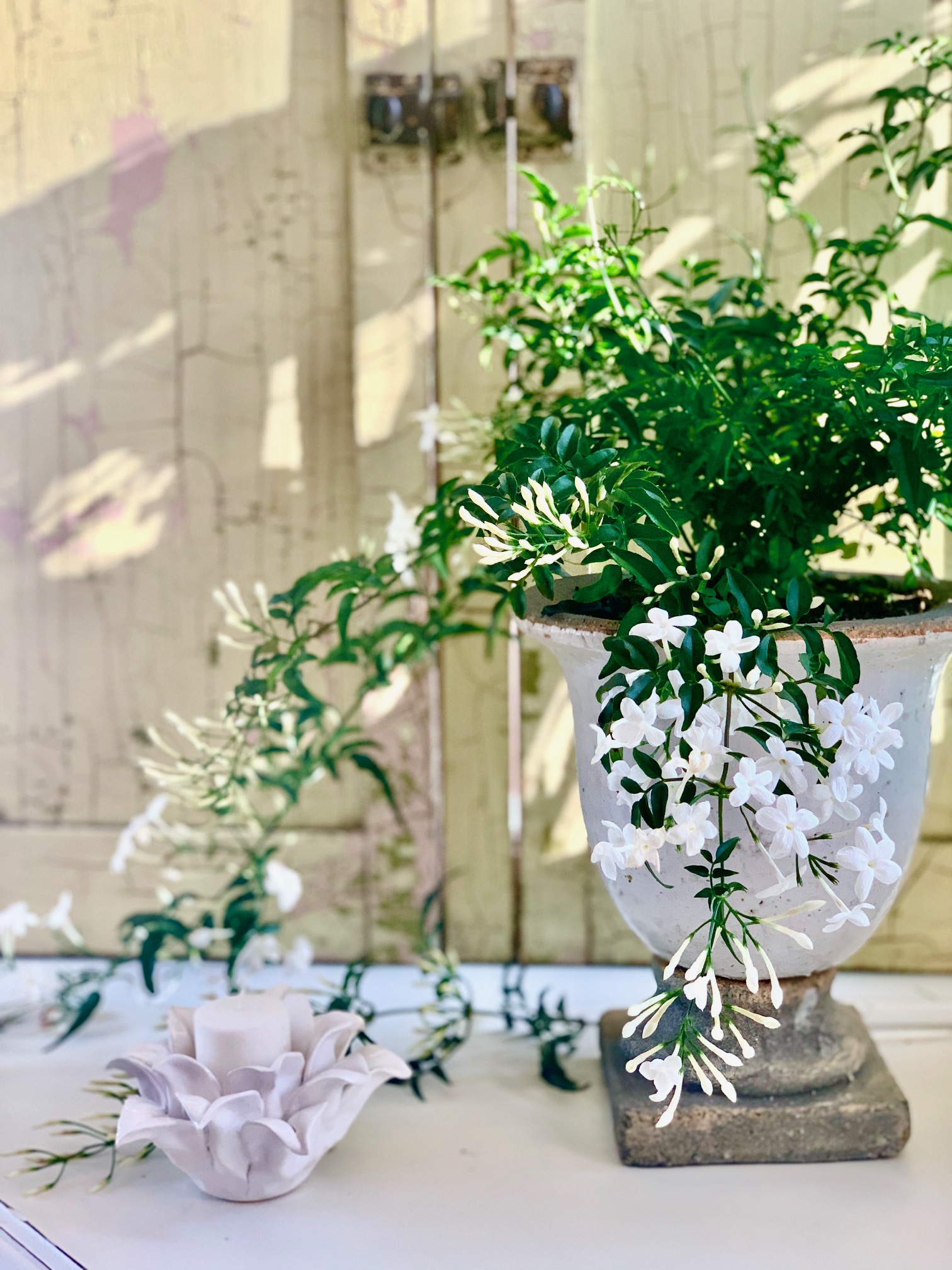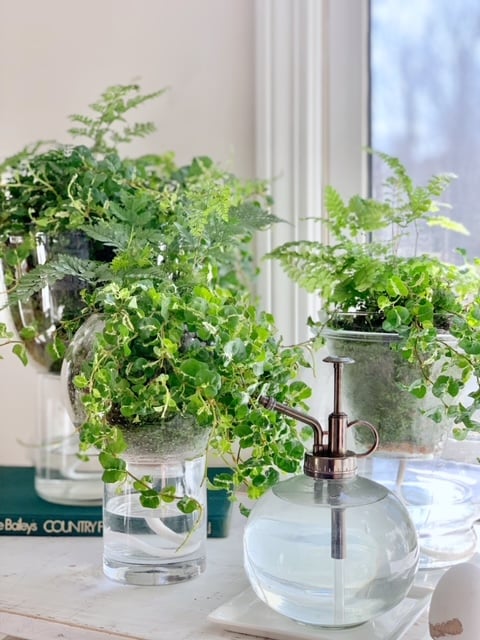One of the key components of plant care is fertilizer, as it provides the necessary nutrients for healthy growth. While there are plenty of commercial fertilizers on the market, they often contain harmful chemicals that can have a negative impact on both the environment and your plants. Luckily, there are several easy ways to make your own natural and organic plant fertilizers using household items. In this post, Natural Fertilizer for Indoor Plants – 10 Organic Options You Can Make at Home I share the many household wastes that can be used to feed your green family!
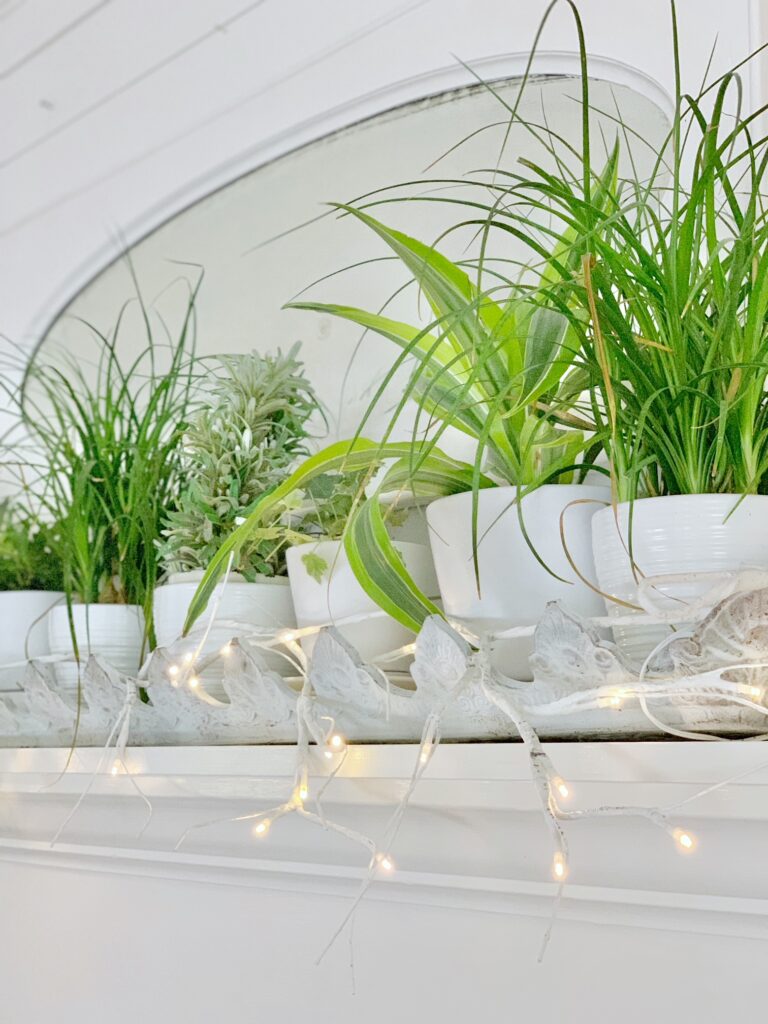
Key Takeaways for Making Homemade Natural Fertilizers
If you’re short on time but looking for the most important information on making homemade natural fertilizers for your indoor plants, here is a quick list of key takeaways. For more detailed instructions and explanations, please refer to the full post. This condensed list covers the essential facts you need to understand the benefits of natural fertilizers, what household ingredients to use, how to cater to different plants’ needs, and the basic steps for putting together your own liquid plant food.
- Natural fertilizers provide necessary nutrients for plants without harsh chemicals. They can be made from household items like coffee grounds, banana peels, grass clippings, etc.
- Natural fertilizers improve plant health and appearance. Proper fertilization prevents diseases, produces more blooms and fruits.
- Making your own natural fertilizer is affordable, eco-friendly and customizable to your plants’ needs.
- Different homemade fertilizers have different benefits – compost provides nutrients over time, liquids give a quicker nutrient boost.
- Consider each plant’s specific nutritional needs when choosing homemade fertilizers. Acid-loving plants benefit from used tea leaves.
- Don’t over-fertilize. Start with recommended dilution ratios and adjust based on your plant’s response.
- Making your own fertilizer is rewarding and helps you better understand your plants’ needs for healthy growth.
What is a Natural Fertilizer?
Have you ever heard the saying “you are what you eat”? Well, the same goes for your plants! Just like how we need a healthy and balanced diet to stay strong and healthy, plants also need proper nutrients to grow and flourish. That’s where homemade natural fertilizers come in! They’re a great way to provide your indoor plants with the necessary nutrients they need to thrive, without resorting to harsh chemicals or breaking the bank. A natural homemade fertilizer is basically a nutrient-rich mixture made from natural ingredients that you can find around your home or backyard. They’re easy to make, eco-friendly, and can work wonders for your plants!
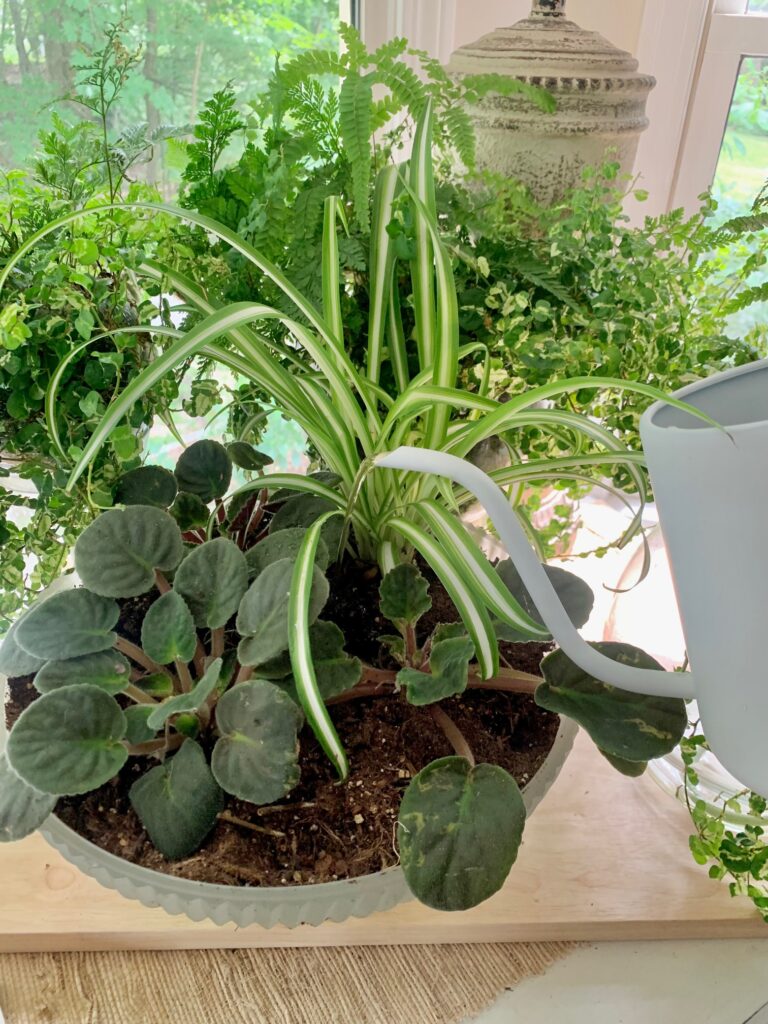
Top 10 Organic Homemade Fertilizers for Indoor Plants
If you’re looking to feed your indoor plants without using harsh synthetic fertilizers, there are many homemade options using common household and garden ingredients. Here are the top 10 easy-to-make natural fertilizers to nourish your plants:
| Natural Fertilizer | Key Nutrients | How to Use |
|---|---|---|
| Crushed Eggshells1 | Calcium, nitrogen, phosphoric acid, zinc | Crush into powder and mix into soil |
| Banana Peels2 | Potassium | Bury peels or puree into soil, or steep to make liquid fertilizer |
| Coffee Grounds3 | Nitrogen | Lightly spread used grounds over soil |
| Green Tea | Calcium, magnesium, phosphorus | Open tea bags over soil or steep to make fertilizer |
| Molasses4 | Iron, potassium | Mix with water and pour over plants |
| Epsom Salts5 | Magnesium, sulfur | Mix with water and add directly to soil monthly |
| Wood Ash | Potassium, calcium, trace minerals | Lightly sprinkle over soil to increase alkalinity. Use ash from oak, maple etc |
| Gelatin Powder6 | Nitrogen, phosphorus, potassium | Dissolve in water and use monthly |
| Cooking Water | Carbohydrates, calcium, nitrogen, phosphorus | Use unsalted cooking water from pasta, eggs etc |
| Aquarium Water | Nitrogen, bacteria | Dilute dirty tank water before applying |
How Fertilizing Your Indoor Plants Can Improve Their Appearance and Health
Indoor plants may seem like low-maintenance additions to your home, but did you know that they still need to be fed? Just like how we need food to survive, indoor houseplants need fertilizers to grow and stay healthy. Fertilizers provide plants with essential nutrients like nitrogen, phosphorus, and potassium, which they can’t always get from the soil they’re planted in. Without proper fertilization, your indoor plants can become weak, prone to diseases, and may not produce as many blooms or fruits. But don’t worry, feeding your plants is easy and can be a fun way to show your green thumb some love! Plus, watching your plants grow and thrive with the help of your homemade natural fertilizer can be a rewarding experience.
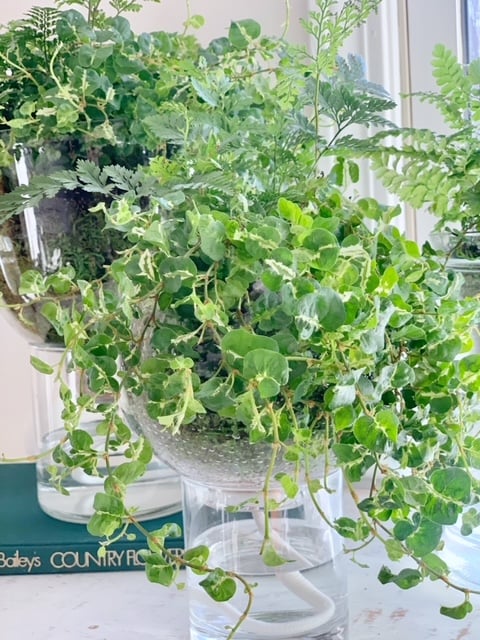
The Many Benefits of Making Your Own Natural Fertilizer For Indoor Plants
- Natural fertilizers are safer for the environment and reduce the risk of water pollution compared to synthetic fertilizers.
- Natural fertilizers provide a slow and steady release of nutrients that are beneficial for plant growth over an extended period of time.
- Natural fertilizers contain essential micro and macro-nutrients7 that are necessary for the healthy growth and development of plants.
- Natural fertilizers can help to improve soil quality, promote beneficial microbial activity and increase the availability of nutrients for plant roots.
- Natural fertilizers are often less expensive than commercial fertilizers, and many of the ingredients can be found around the house.
- Natural fertilizers can be customized to meet the specific needs of different types of plants, ensuring that they receive the necessary nutrients to thrive.
- Natural fertilizers are safe and non-toxic for children and pets who may come into contact with the plants.
- Natural fertilizers are a great way to connect with nature and learn about the unique needs of different plants, enhancing your gardening skills and knowledge.
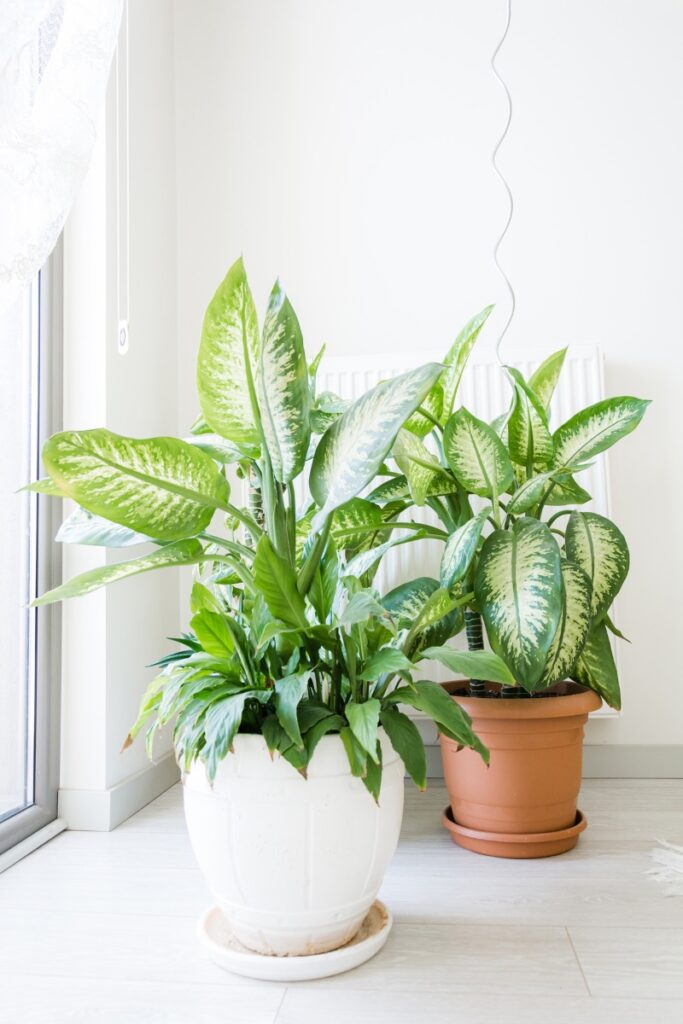
DIY Indoor Plant Fertilizers You Can Make at Home
Using Organic Matter
One of the best options for natural fertilizer is using organic matter. This can include a variety of household waste such as banana peels, coffee grounds, grass clippings, and vegetable scraps. These materials can be added to a compost pile to create a rich and nutrient-dense soil amendment that can be used to feed indoor plants. Composting is a great way to reduce waste and create your own natural plant food.
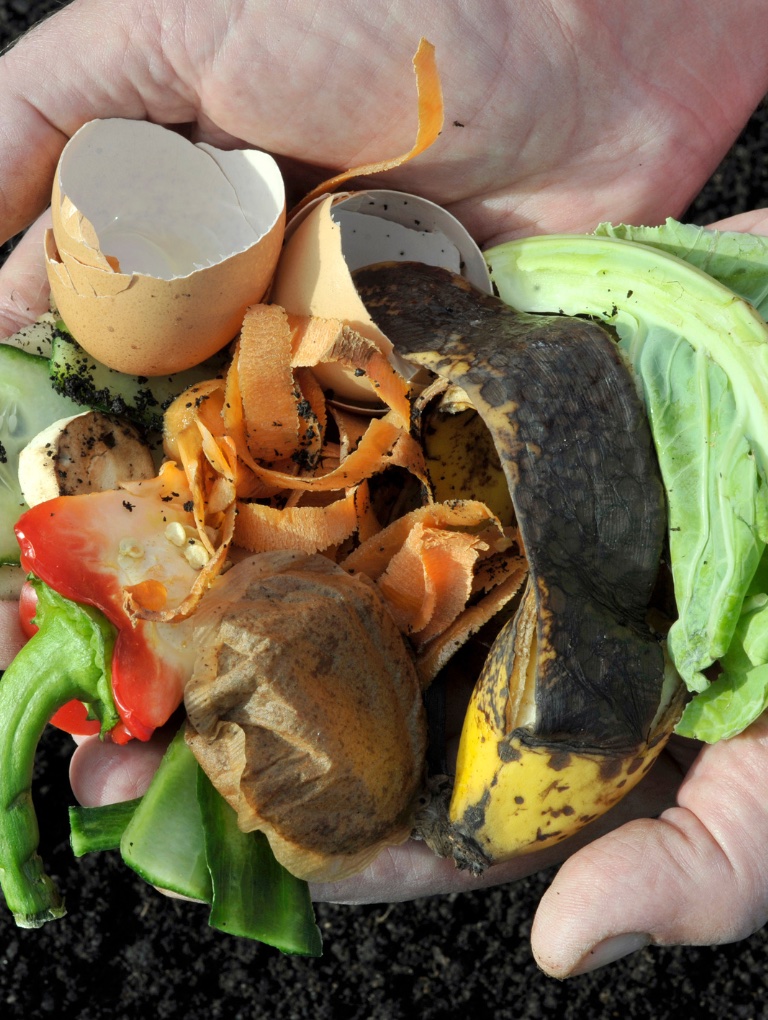
Liquid Fertilizers
For those who want a quicker option, liquid fertilizers are also a great choice. To make your own liquid fertilizer, mix one gallon of water with organic materials such as grass clippings, egg shells, or wood ash. Let the mixture steep for a few days, then strain out any solids and use the remaining liquid to feed your plants. Another great liquid fertilizer is compost tea, which can be made by steeping compost in water and using the resulting liquid to water plants.
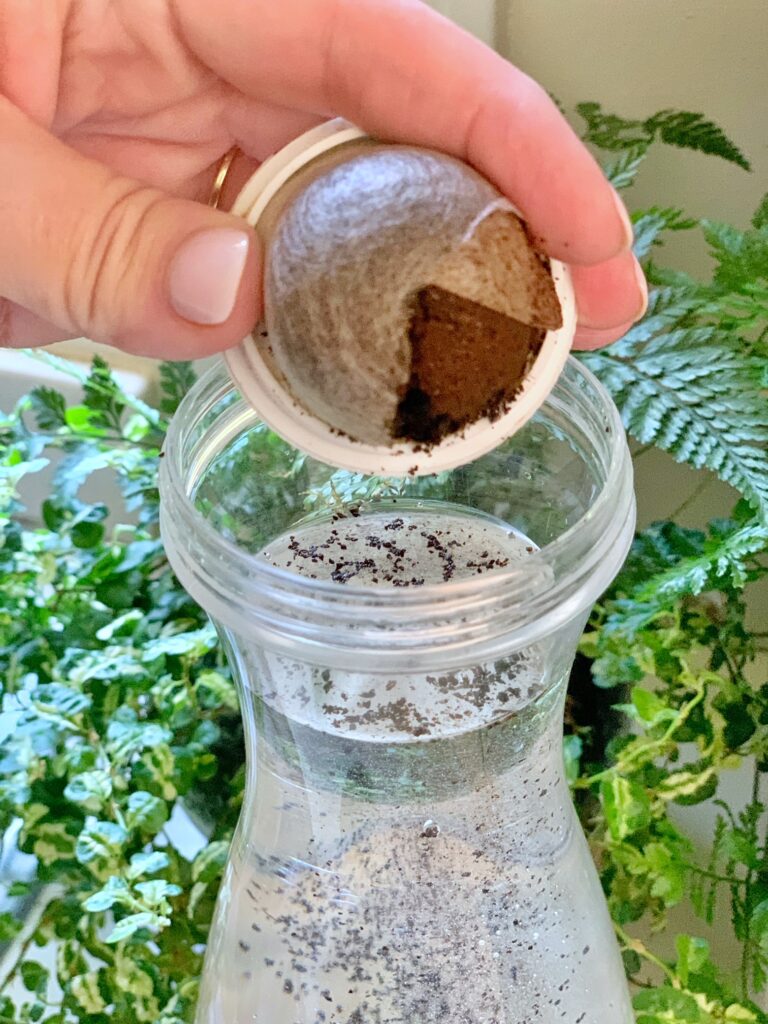
Fish Waste
If you have an aquarium, fish tank water can also be a great source of natural fertilizer. Fish waste contains necessary nutrients that can be absorbed by plant roots. In addition, coffee grounds (linking my favorite organic coffee pods) and used tea bags can be added directly to potting soil to provide essential nutrients.
Acid-loving Plants
For acid-loving plants such as African violets, tannic acid found in tea leaves can be particularly beneficial. Simply add used green tea leaves or tea bags to water, let it steep for a few days, and use the resulting liquid to water plants. Epsom salts can also be added to water to provide necessary trace minerals.
Here’s a list of some popular acid-loving indoor plants:
- Azaleas
- Ferns
- Jasmine
- Orchids
- Fiddle-leaf figs
- African violets
- Begonias
- Pothos
- Spider plants
- Peace lilies

Considering the Specific Needs of Each Type of Plant
When making your own plant fertilizer, it’s important to consider the specific needs of each type of plant. Different plants require different types and amounts of nutrients, so it’s important to research their specific needs before applying any homemade fertilizer. In addition, it’s important to not add too much fertilizer, as over-fertilizing can lead to burned roots and too much growth.
Different Homemade Plant Fertilizers and Their Benefits
There are several different ways to make your own homemade plant fertilizers, and they all have different benefits. Slow-release fertilizers such as worm castings or bone meal are a great option for providing necessary nutrients over a longer period of time. Granular fertilizers can be added directly to potting soil for quick results, while liquid fertilizers provide a steady release of nutrients. Mixing different types of fertilizer can also provide the necessary nutrients for healthy growth.
While making your own plant fertilizers may seem daunting at first, it’s actually quite easy and can save you money in the long run. By using natural ingredients, you can ensure that your plants are getting the necessary nutrients for healthy growth without the negative impact of synthetic fertilizers. Experiment with different household items and see what works best for your plants – you may just discover the best organic fertilizer for your indoor plants!
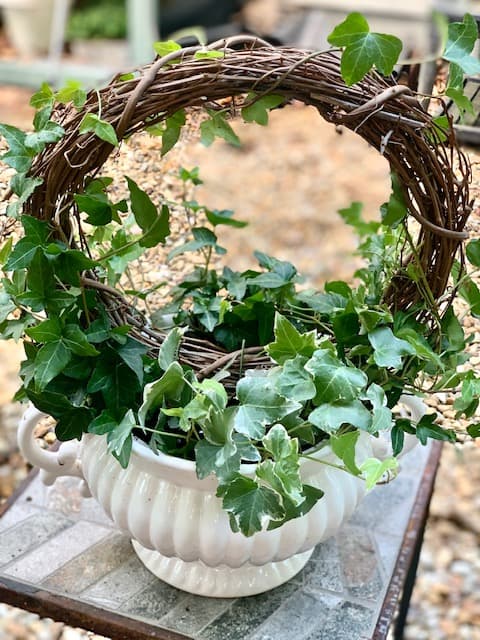
Frequently Asked Questions About Natural Fertilizer For Indoor Plants
Yes! Making your own indoor plant fertilizer is a great way to provide your plants with the necessary nutrients without the use of harmful chemicals. It can also save you money in the long run, as household items can be used instead of expensive commercial fertilizers.
Household items such as banana peels, coffee grounds, grass clippings, vegetable scraps, egg shells, and wood ash can all be used to make indoor plant fertilizer.
Yes! Coffee grounds used sparingly can be added directly to potting soil to provide essential nutrients to your indoor plants. Your best bet is to make a liquid fertilizer using coffee grounds.
Yes! Fish tank water can be a great source of natural fertilizer for indoor plants, as fish waste contains necessary nutrients that can be absorbed by plant roots.
It’s important to not add too much fertilizer, as over-fertilizing can lead to burned roots and too much growth. It’s best to research the specific needs of each type of plant before applying any homemade fertilizer.
Mixing different types of fertilizer can provide the necessary nutrients for healthy growth. Slow-release fertilizers such as worm castings or bone meal are a great option for providing necessary nutrients over a longer period of time, while liquid fertilizers provide a steady release of nutrients.
Organic matter from your home can be a great source of fertilizer for your air plants and succulents. You can create a compost tea using kitchen scraps such as vegetable scraps, coffee grounds, and eggshells. Simply add the scraps to a container filled with water and let it steep for a few days, stirring occasionally. Then, strain the liquid and dilute it with water before using it to water your plants. Another option is to mix in small pieces of banana peels or grass clippings into your succulent potting soil. These will slowly release nutrients as they decompose, providing your plants with the necessary nutrients for healthy growth.
Steps to Make your own Liquid Fertilizer for Indoor Plants:
- Choose your ingredients: Select one or a combination of ingredients like banana peels, coffee grounds, eggshells, vegetable scraps, grass clippings, or fish tank water. Each ingredient has unique benefits, so consider the needs of your indoor plant.
- Prepare the ingredients: Depending on the ingredient, you might need to chop, grind, or crush them into smaller pieces. For example, banana peels should be chopped into small pieces, while eggshells should be crushed into fine powder.
- Mix the ingredients: Mix your chosen ingredients with a gallon of water in a large container. Stir the mixture thoroughly to ensure that the ingredients are well combined.
- Let it sit: Allow the mixture to sit for several days or up to a week, depending on the ingredients used. This will allow the nutrients to leach into the water, creating a nutrient-rich liquid fertilizer.
- Strain the mixture: Strain the mixture through a cheesecloth or fine mesh strainer to remove any large particles or debris. This will prevent clogging when you use the fertilizer.
- Dilute the fertilizer: Dilute the liquid fertilizer with water in a 1:1 ratio, or as recommended for your specific plant type. Over-fertilizing can be harmful to your plants, so it’s important to follow the recommended dilution ratio.
- Apply the fertilizer: Pour the fertilizer onto the soil around the base of your indoor plants, taking care not to get any on the leaves. Repeat every 2-4 weeks or as recommended for your specific plant type.
By following these simple steps, you can make your own liquid fertilizer for your indoor plants using natural ingredients that are good for your plants and the environment.
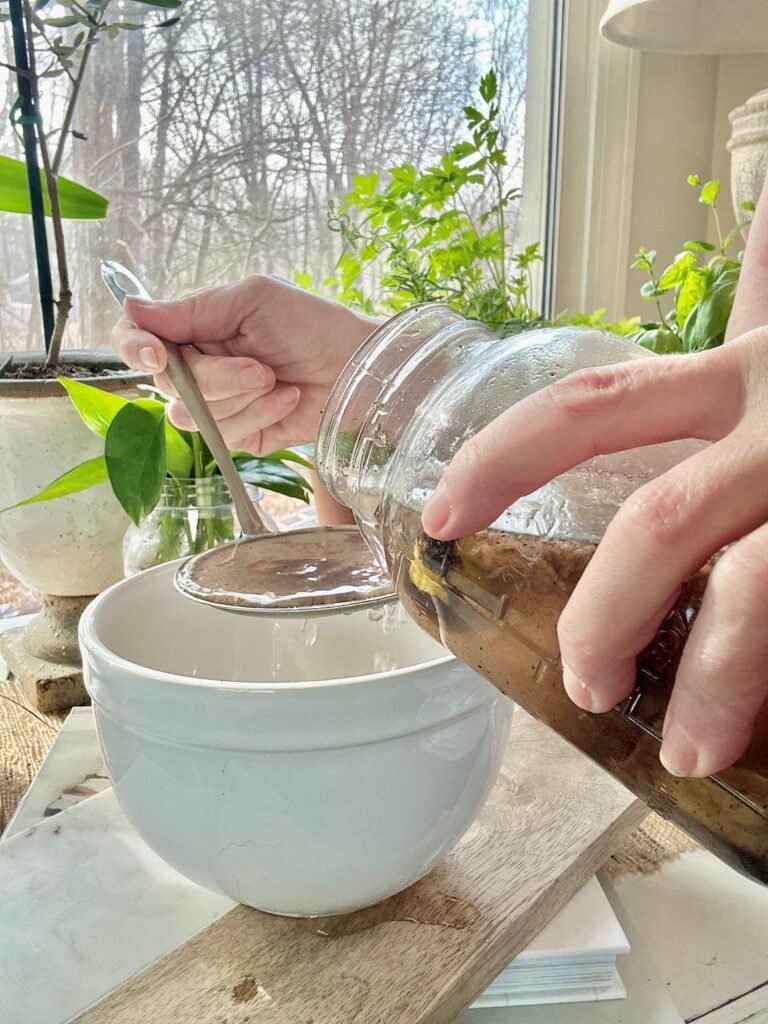
I hope you found this post, Natural Fertilizer for Indoor Plants – 10 Organic Options You Can Make at Home helpful! With these DIY indoor plant fertilizers, you don’t have to break the bank to keep your plants healthy and happy. Plus, it’s a fun and rewarding way to connect with your plants and learn about what they need to thrive. So, don’t be afraid to get creative and try out different recipes. Your plants will thank you for it! Remember to always use natural and organic ingredients, and to adjust the amount of fertilizer based on your plant’s needs. Happy planting!
For more Plant care visit:
- How Often Should I Water a Pothos Plant?
- Do Air Plants Need Sun? (Choosing the Ideal Spot)
- How to Make Your Aloe Plant Grow Bigger (Plus Plant Care Tips)
Thank you for visiting the blog today, I love it when you do!
Keep creating friends!

- Coffee grounds, eggshells and Epsom salts in the home garden. (n.d.). UMN Extension. https://extension.umn.edu/manage-soil-nutrients/coffee-grounds-eggshells-epsom-salts ↩︎
- Zaini, H. M., Roslan, J., Saallah, S., Munsu, E., Sulaiman, N. S., & Pindi, W. (2022). Banana peels as a bioactive ingredient and its potential application in the food industry. Journal of Functional Foods, 92, 105054. https://doi.org/10.1016/j.jff.2022.105054 ↩︎
- Support, E. W. (2023b, December 1). Used appropriately, coffee grounds improve soil and kill slugs. OSU Extension Service. https://extension.oregonstate.edu/news/used-appropriately-coffee-grounds-improve-soil-kill-slugs ↩︎
- Fox, G. (n.d.). Molasses or malarkey? N.C. Cooperative Extension. https://beaufort.ces.ncsu.edu/2024/01/molasses-or-malarkey/ ↩︎
- Coffee grounds, eggshells and Epsom salts in the home garden. (n.d.). UMN Extension. https://extension.umn.edu/manage-soil-nutrients/coffee-grounds-eggshells-epsom-salts ↩︎
- Unflavored gelatin makes for an excellent fertilizer. (n.d.-b). Cape Gazette. https://www.capegazette.com/article/unflavored-gelatin-makes-excellent-fertilizer/26790 ↩︎
- Quick guide to fertilizing plants. (n.d.). UMN Extension. https://extension.umn.edu/manage-soil-nutrients/quick-guide-fertilizing-plants ↩︎


